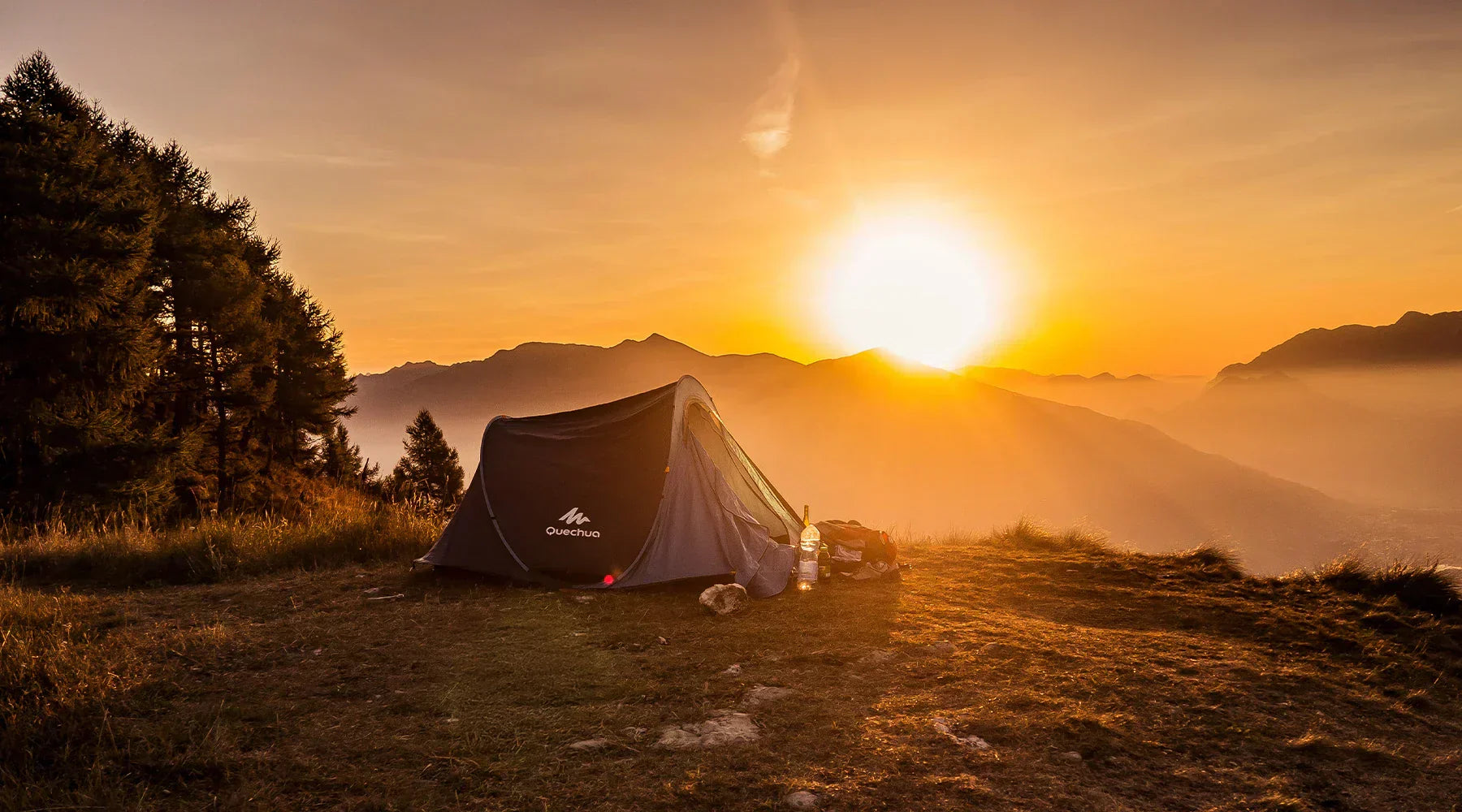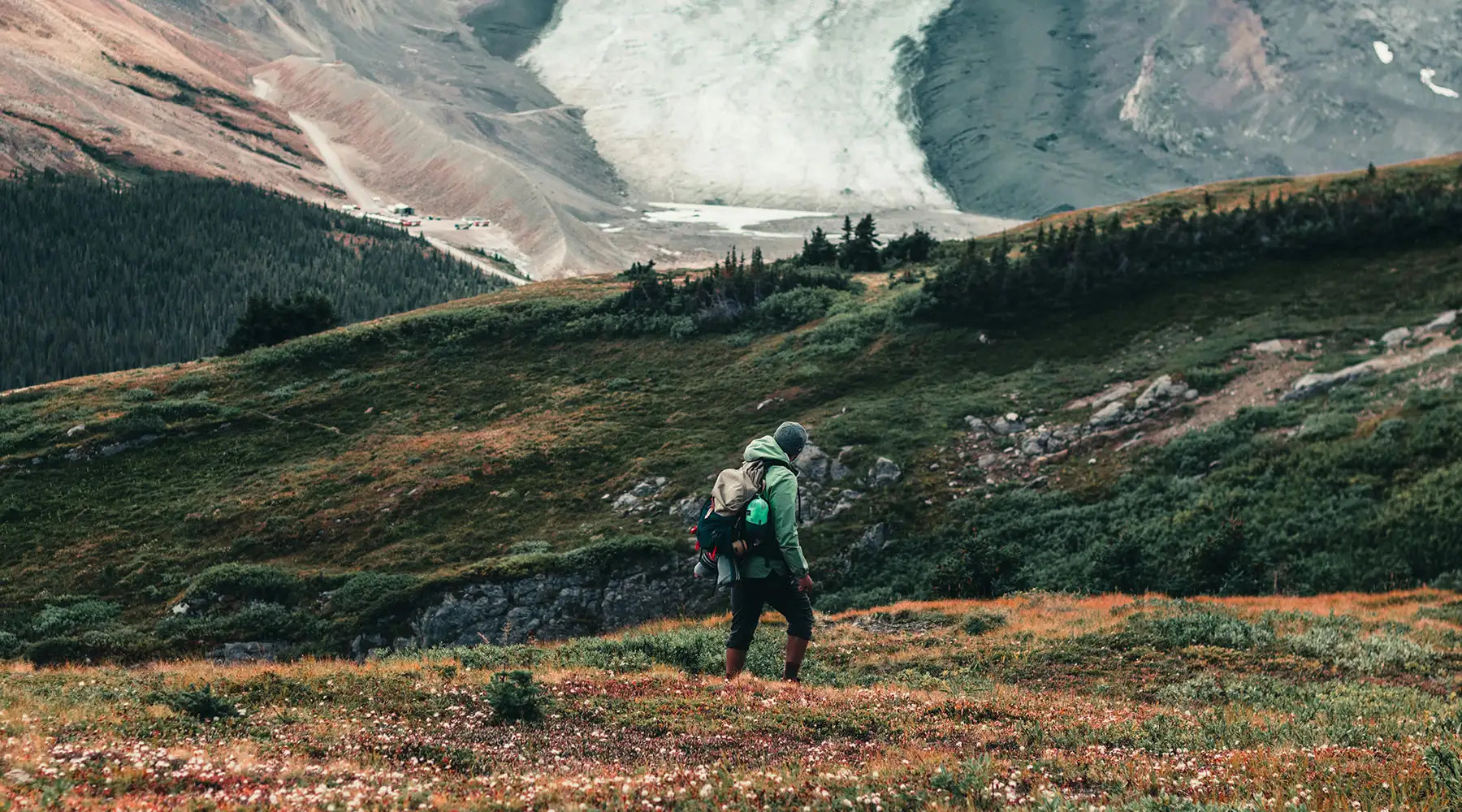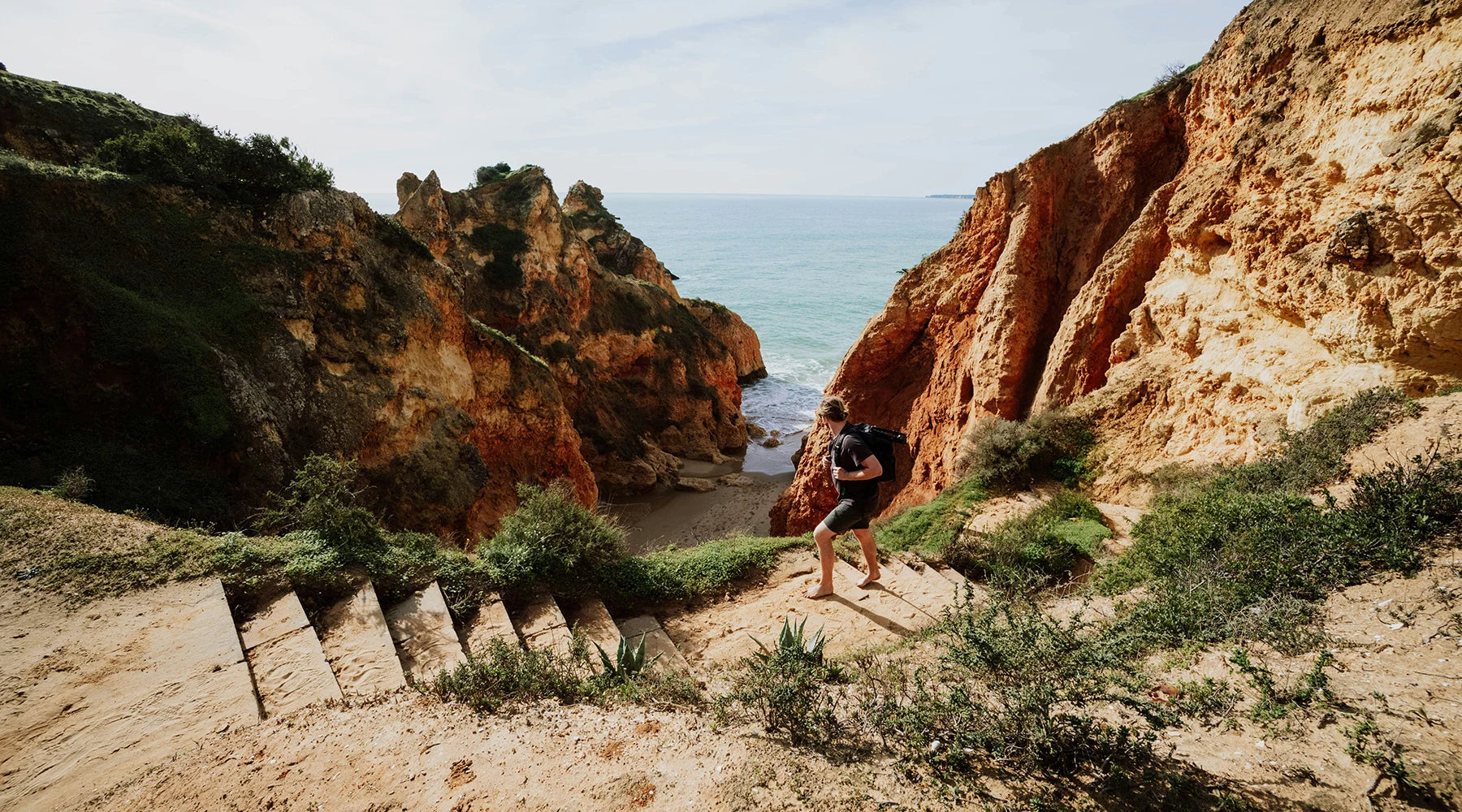Tent Camping for Beginners: What I Wish I Knew Before My First Trip

Heading out for your first camping trip can be both exciting and a little intimidating. You might be wondering what gear to bring, how to cook outdoors, or even how to choose the right campsite. Don’t worry — we’ve all been there, and the good news is, camping doesn’t have to be complicated. This beginner’s guide will walk you through everything we wish we knew before our first trip so you can feel prepared, confident, and excited to pitch your first tent.
Jump to Section:
- Why Camping Is Worth Trying
- Essential Gear
- Clothing & Footwear
- Health & Hygiene
- Meal Planning & Food Safety
- Setting Up Camp
- Staying Comfortable
- Safety Tips & Common Mistakes
Download our Wilderness and Waves Camping Checklist 2025 — a free printable guide to keep your trip organized.
Why Camping Is Worth Trying
Spending a night under the stars offers something you can’t replicate at home. It reconnects you with nature, clears your mind from daily distractions, and helps you experience the outdoors in its purest form. Whether it’s a local campground or a weekend trip to the mountains, camping teaches you self-reliance, problem-solving, and how to slow down and be present. You don’t need to be an expert — just be open to the journey.
Essential Gear
Think of camping like staying in a basic cabin with no furniture, electricity, or kitchen. You’re creating your own outdoor setup — so the right gear can make the experience smooth and comfortable. If it’s your first time, consider borrowing or renting the big-ticket items like tents, sleeping bags, and sleeping pads. If you’re ready to invest, here’s what we recommend starting with:
-
Tent
Go one size bigger than you think you’ll need for extra space. Try the BISINNA 2-Person Tent or the Naturehike Star River 2 Tent for more room and durability.
-
Sleeping Bag & Pad
A 3-season bag offers flexibility across spring, summer, and fall. Pair it with a sleeping pad for warmth and comfort. Consider one from our Cots & Mattresses collection.
-
Backpack
Car camping? A medium bag works. Hiking in? Use a CAMEL 56L or the smaller Golden Camel 14L.
-
Lighting
Bring a headlamp for tasks and a lantern for ambiance. Don’t rely on your phone flashlight alone.
-
Camp Kitchen
Pick up outdoor-friendly cookware, sporks, plates, and a camp stove. Our Camping Accessories section has lightweight and durable kitchen gear built for the outdoors.

Clothing & Footwear
Packing the right clothes can make or break your trip. Think in layers so you can adapt to changing temperatures. Skip cotton and go for moisture-wicking, quick-drying fabrics that help regulate body temperature and prevent chafing.
- Start with a breathable base layer.
- Add an insulating mid-layer like fleece.
- Top with a waterproof jacket or shell for wind and rain.
At night, it gets chilly — even in summer. Bring warm socks, a thermal beanie, gloves, and a set of dedicated sleepwear. For daytime wear, bring sturdy shoes with grip for hiking and a pair of comfortable slip-ons or sandals for walking around camp.
Footwear Tip: Break in your hiking boots before your trip to avoid blisters.

Health & Hygiene
Just because you’re camping doesn’t mean you have to rough it completely. Personal hygiene keeps you feeling fresh and prevents small irritations from turning into bigger issues.
- Toothbrush, toothpaste, floss
- Unscented deodorant and baby wipes
- Hand sanitizer (non-scented)
- Lip balm with SPF and sunscreen
- Small towel and biodegradable soap
- Toilet paper — some campgrounds run out
- Prescription meds and a basic first aid kit
Keep these items together in a hygiene bag and store it near your kitchen bin or sleeping area — just not inside the tent. For bathrooms without running water, baby wipes and sanitizer are your best friends. You’ll find portable hygiene solutions in our accessories collection.

Meal Planning & Food Safety
Great meals make great memories — and with a little planning, camp cooking can be simple and stress-free. Whether you’re just bringing snacks or planning full campfire dinners, think ahead and pack foods that match your trip length and available storage.
For Short Trips (1–2 nights):
- Fresh produce, eggs, and dairy in a cooler
- Pre-marinated meats stored in sealed containers
- Sandwiches, wraps, and pre-cooked pasta salads
For Longer Trips (3+ nights):
- Dehydrated meals or freeze-dried backpacking food
- Instant oatmeal, ramen, and rice packs
- Peanut butter, tuna packets, and shelf-stable soups
Don’t forget the snacks — trail mix, granola bars, fruit leather, and jerky are all excellent. And yes, bring the s’mores kit. Label your containers, prep what you can at home, and keep meals simple to save time and cleanup.
Coffee or tea in the morning? Bring a camp kettle or French press. Skip glass and pack stainless steel mugs or collapsible silicone cups.
Food Storage Tip: Keep all food sealed in a hard-sided container or cooler when not in use. If you're camping in bear country, follow posted regulations — some parks require bear lockers or hanging food in a tree.

Setting Up Camp
Arrive at your campsite with at least 1–2 hours of daylight left. This gives you time to unpack, stake your tent, and get a feel for the surroundings. Choose a flat, dry spot, ideally shaded and not directly under trees with large limbs.
- Pitch your tent first — use a footprint or tarp underneath
- Keep your food prep area and fire pit away from your sleeping area
- Use rocks or logs to create zones: cooking, relaxing, sleeping
Store scented items like deodorant, food, and toothpaste in a bin or vehicle — not inside your tent. If wildlife is common, ask the ranger about proper storage on arrival.

Staying Comfortable
Even if it’s warm during the day, temperatures can drop fast at night. Staying dry, warm, and comfortable is the secret to loving your first camping trip.
- Bring a sleeping pad or cot to lift you off the cold ground
- Dress in layers — moisture-wicking base, fleece middle, waterproof shell
- Pack extra socks, gloves, and a hat — even in summer
- Bring a lightweight blanket or emergency foil wrap as backup
Rain in the forecast? Pack a tarp or rain fly to cover your tent and keep an extra set of clothes dry in a plastic bag just in case. Explore our Sleeping Bags & Blankets for gear designed to help you sleep soundly under the stars.

Safety Tips & Common Mistakes
Camping is fun and safe when you're prepared. Here’s how to avoid common beginner mistakes and stay secure on your first trip:
- Always tell someone where you’re going and when you plan to return
- Don’t arrive at camp too late — it’s harder to set up in the dark
- Pack a basic first aid kit and learn how to use it
- Test your gear at home first — especially the tent and stove
- Don’t store food in your tent — use sealed bins or a vehicle
- Check the weather and be prepared for sudden changes
Want a full breakdown on safety and navigation? Check out our companion guide: Outdoor Exploration Advice

Final Thoughts
Tent camping is one of the best ways to reconnect with the outdoors, yourself, and your loved ones. The key to a great experience isn’t perfection — it’s preparation. With a little planning and the right gear, your first trip will be full of discovery, fresh air, and lasting memories.
Start with the essentials:
Download your free printable Wilderness and Waves Camping Checklist 2025 to stay organized every step of the way.



